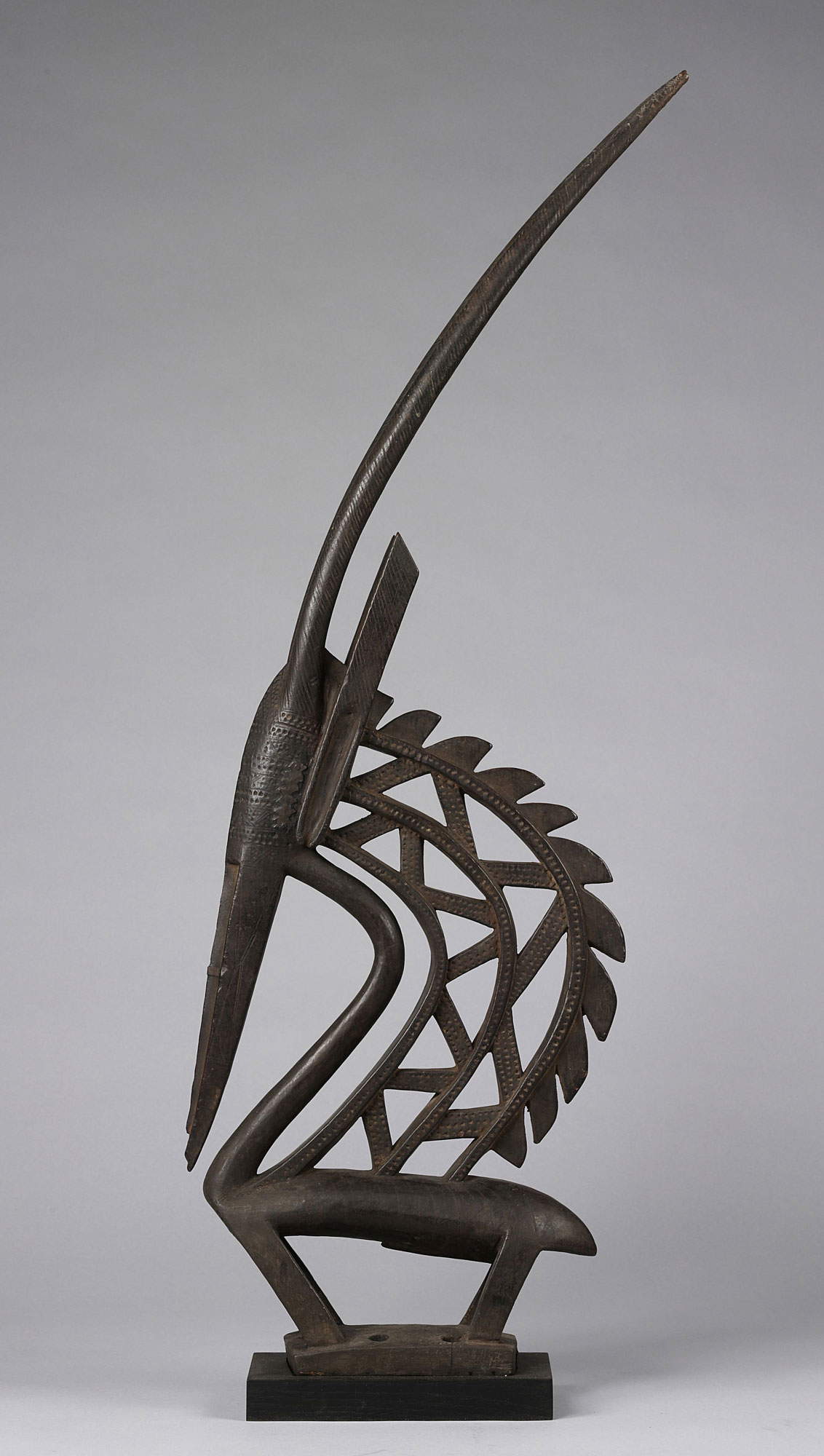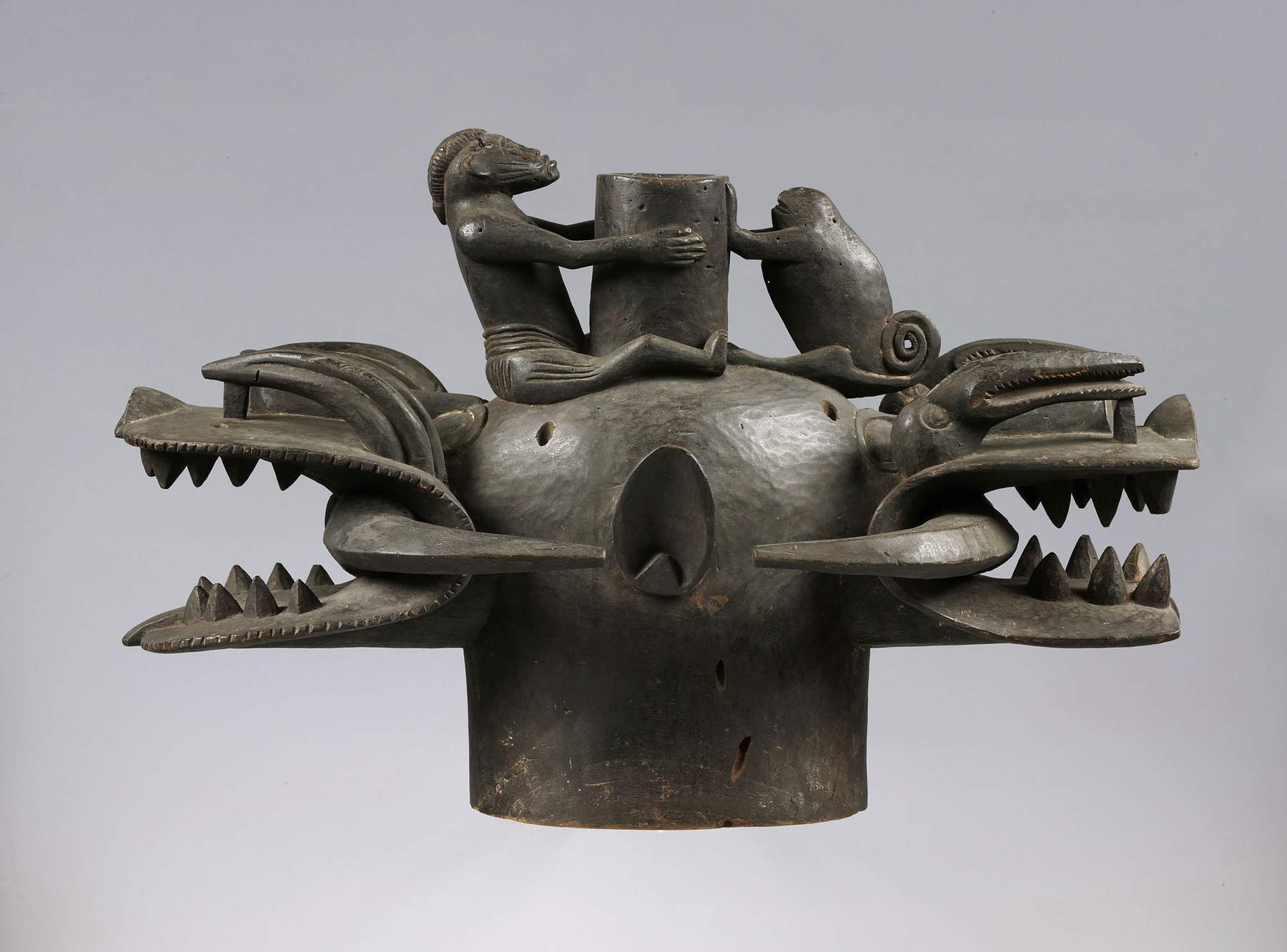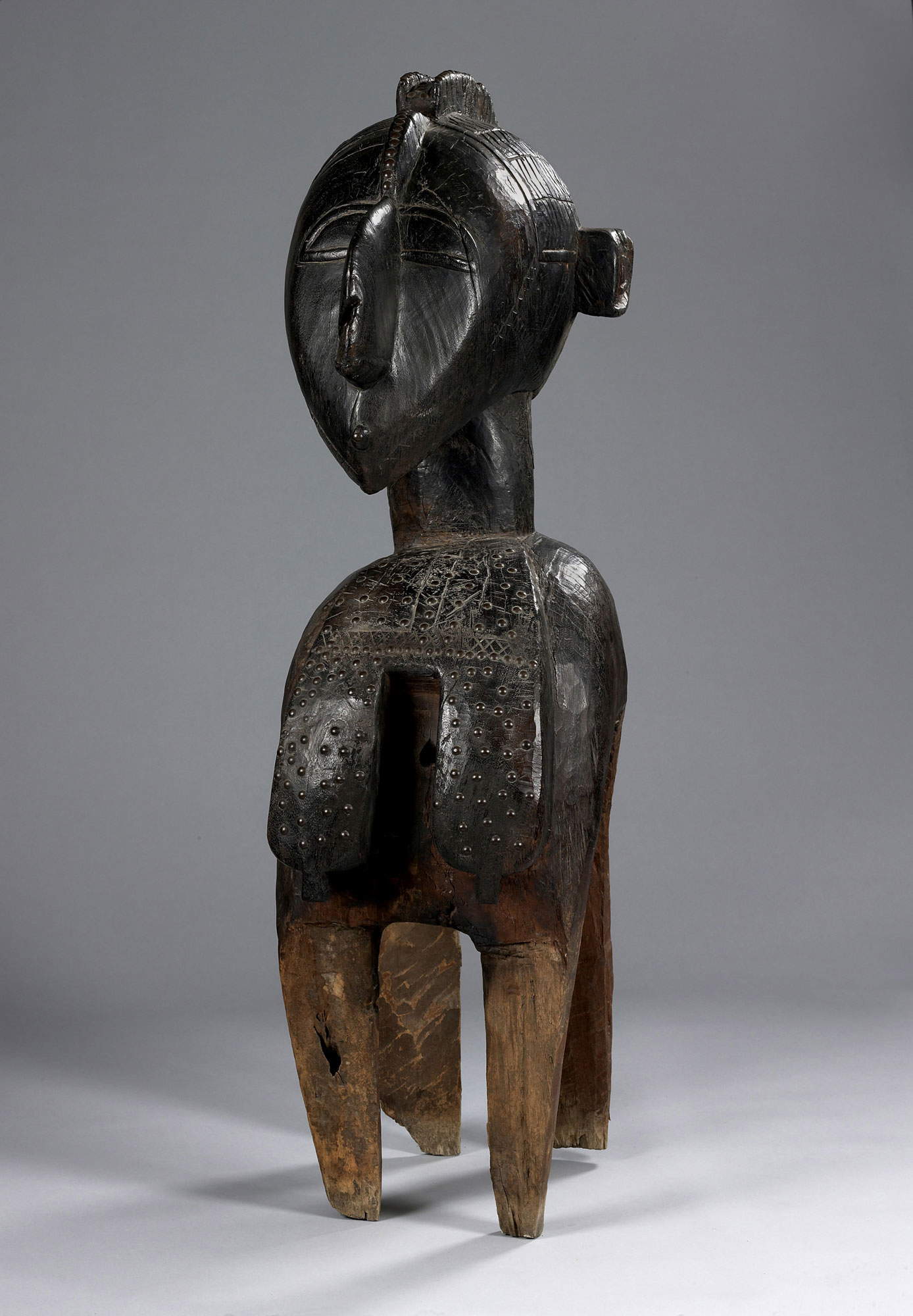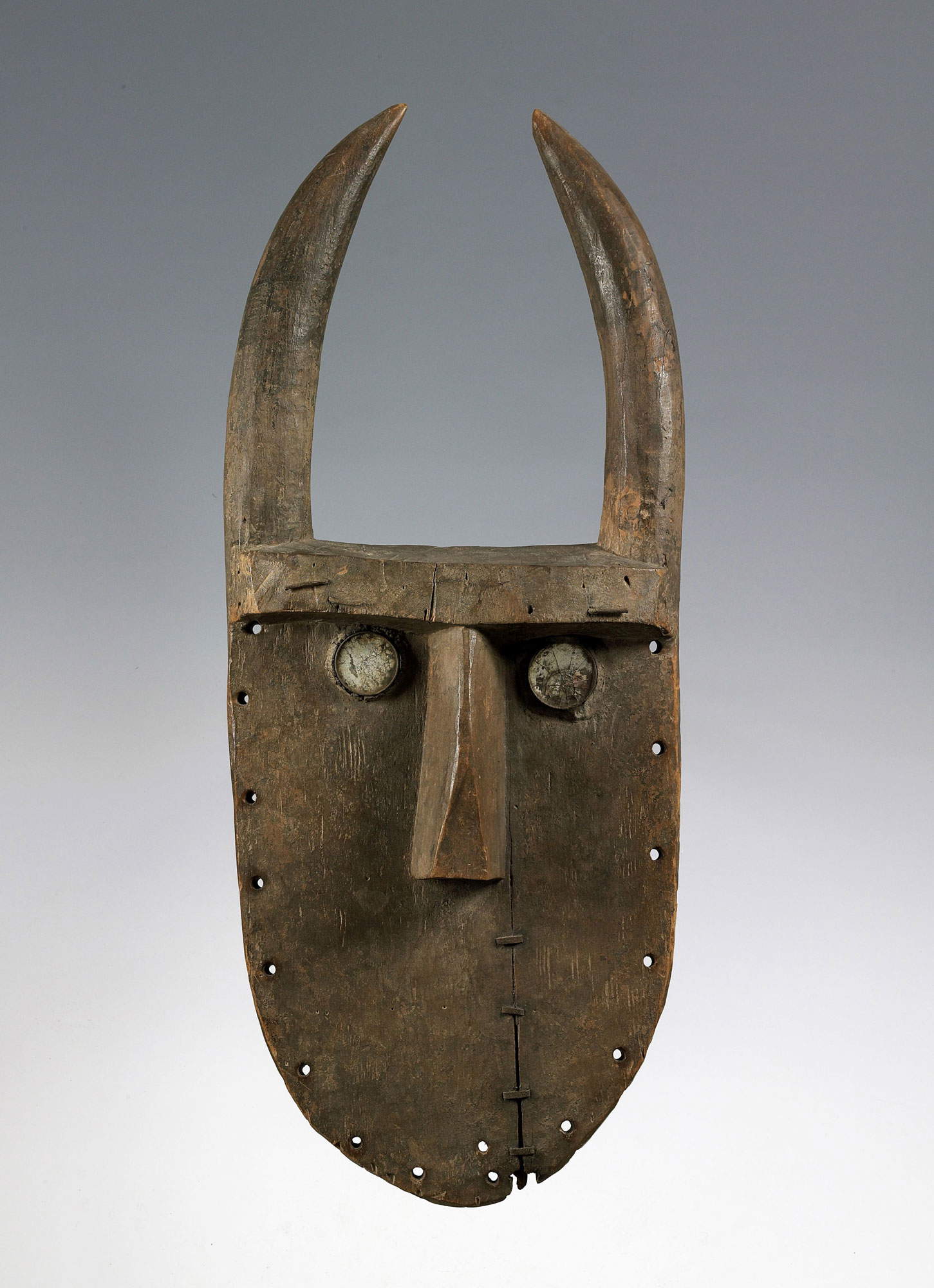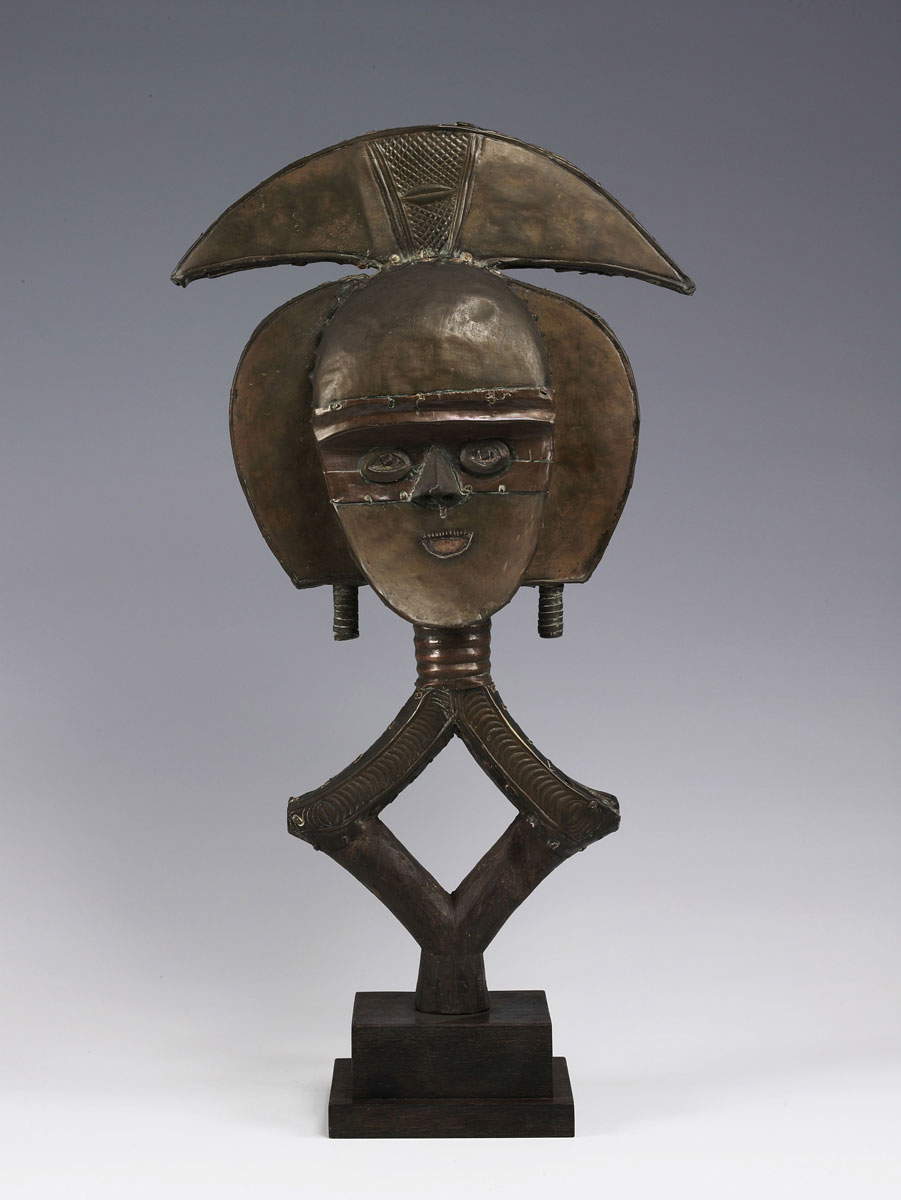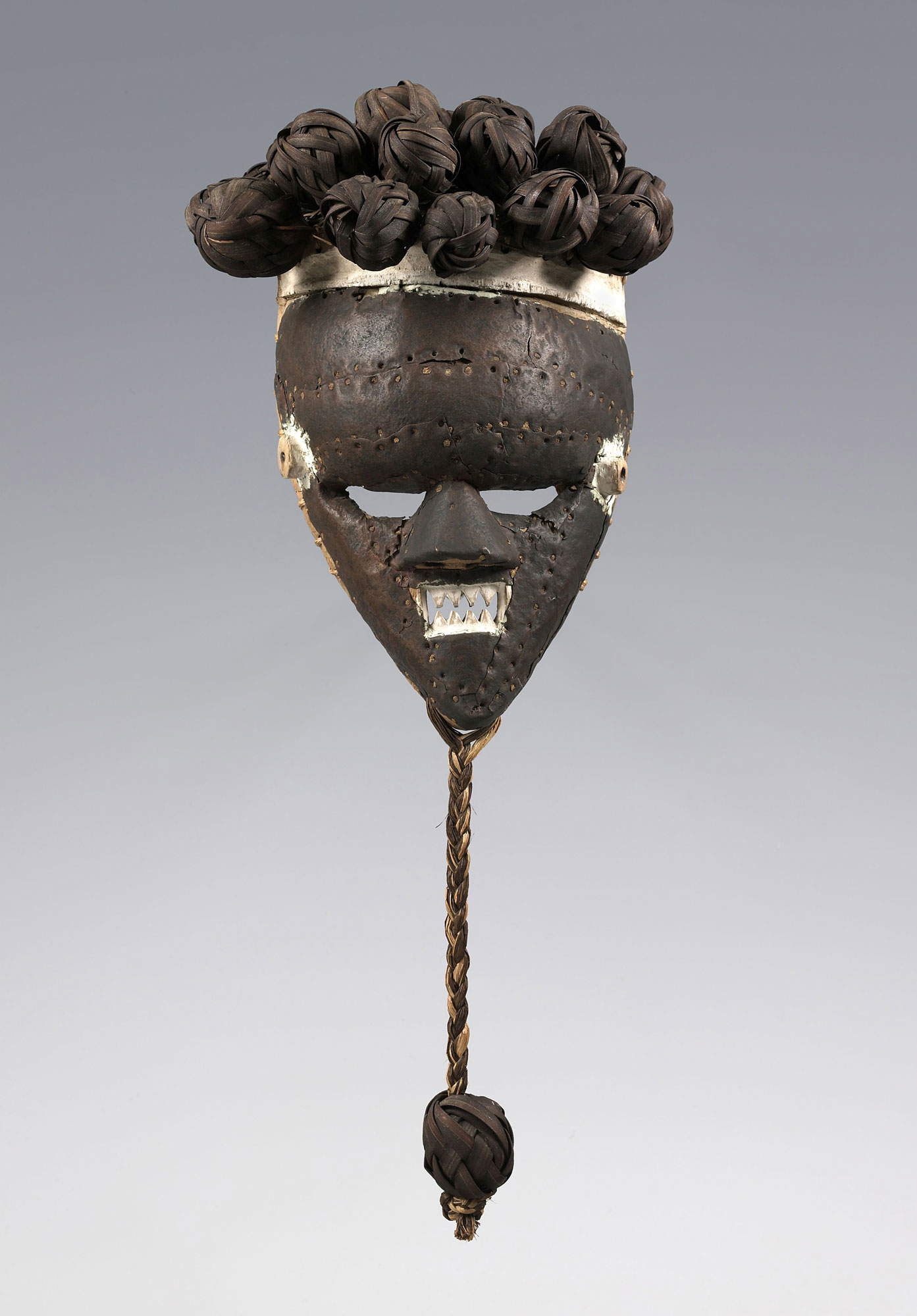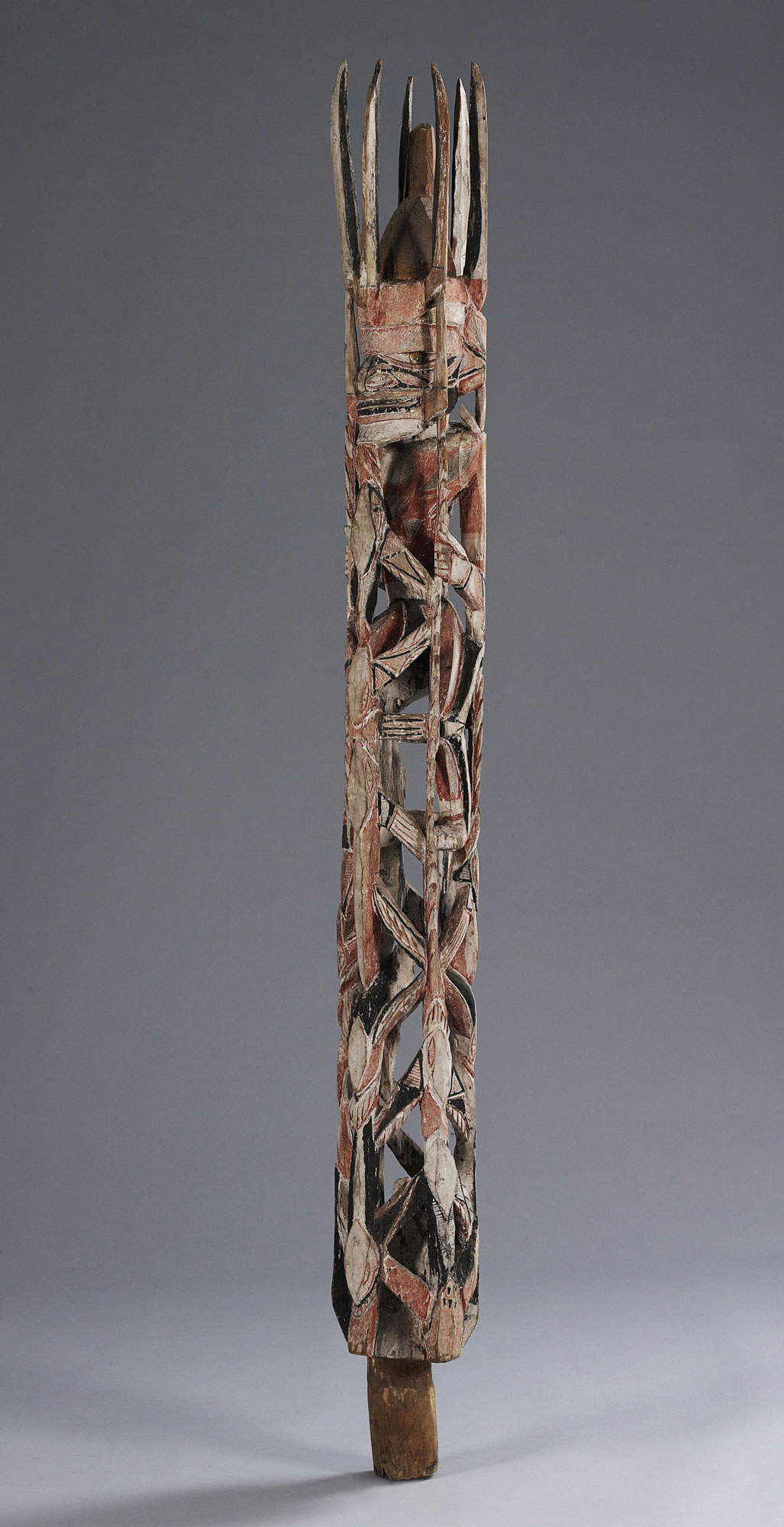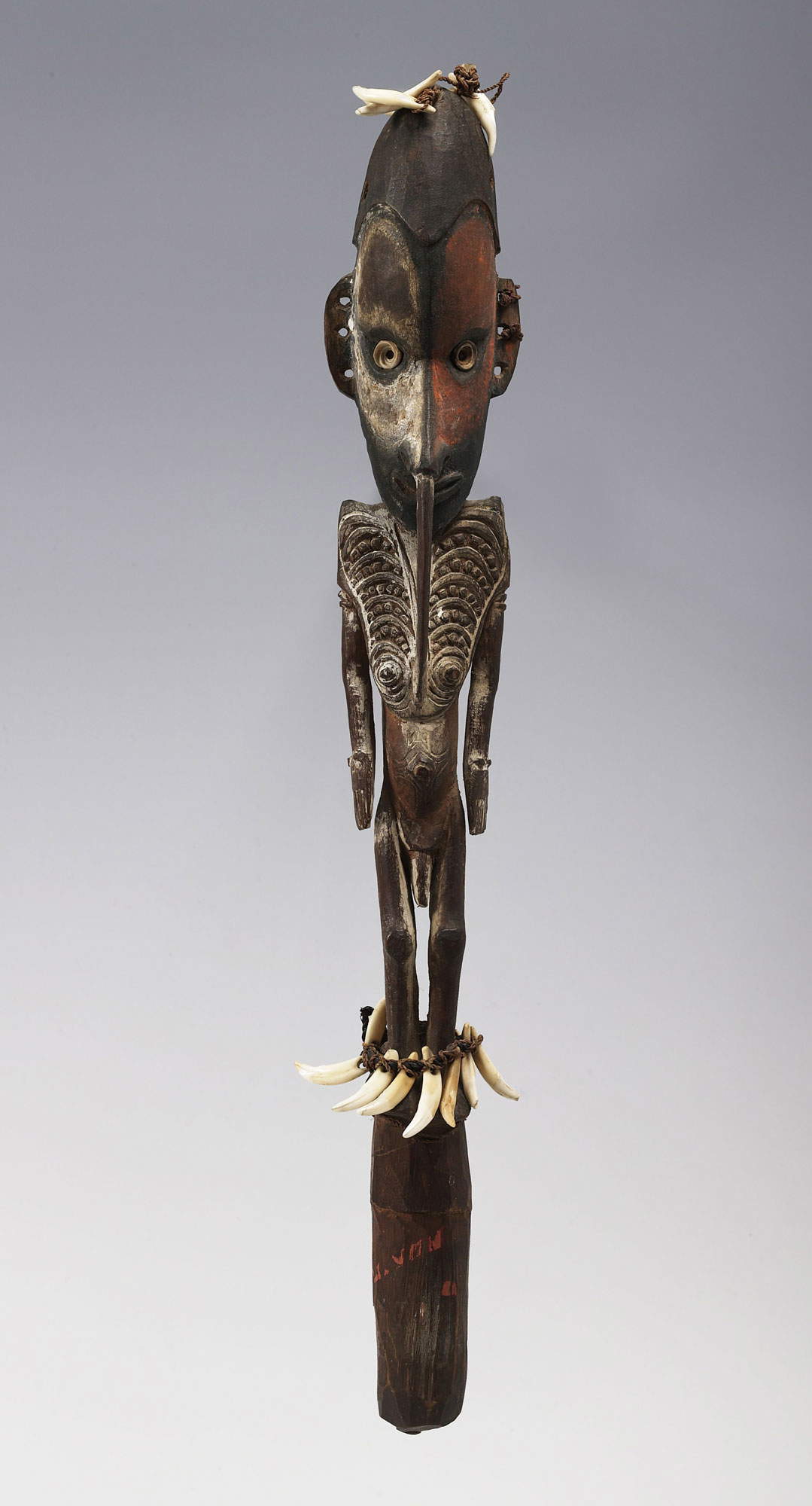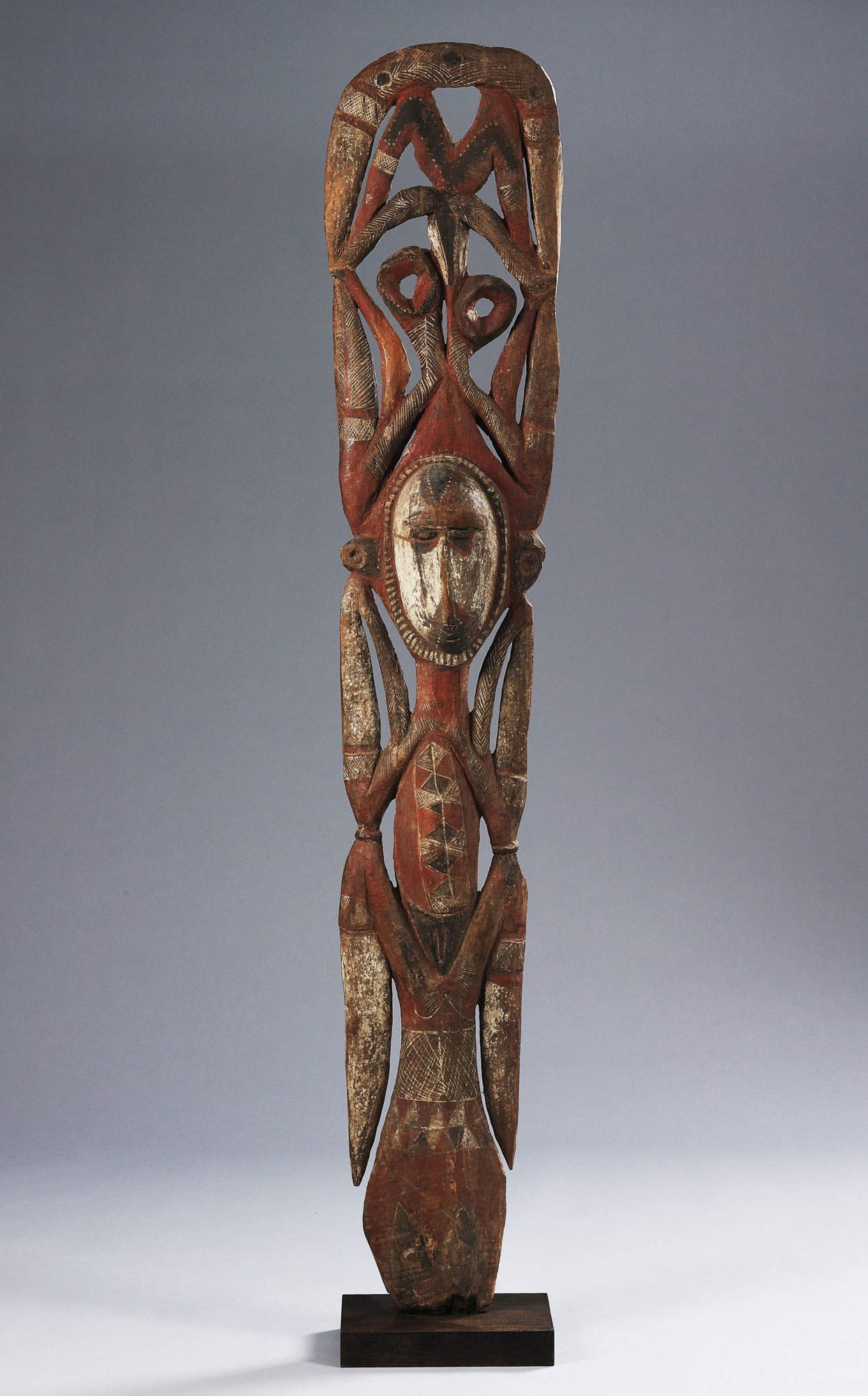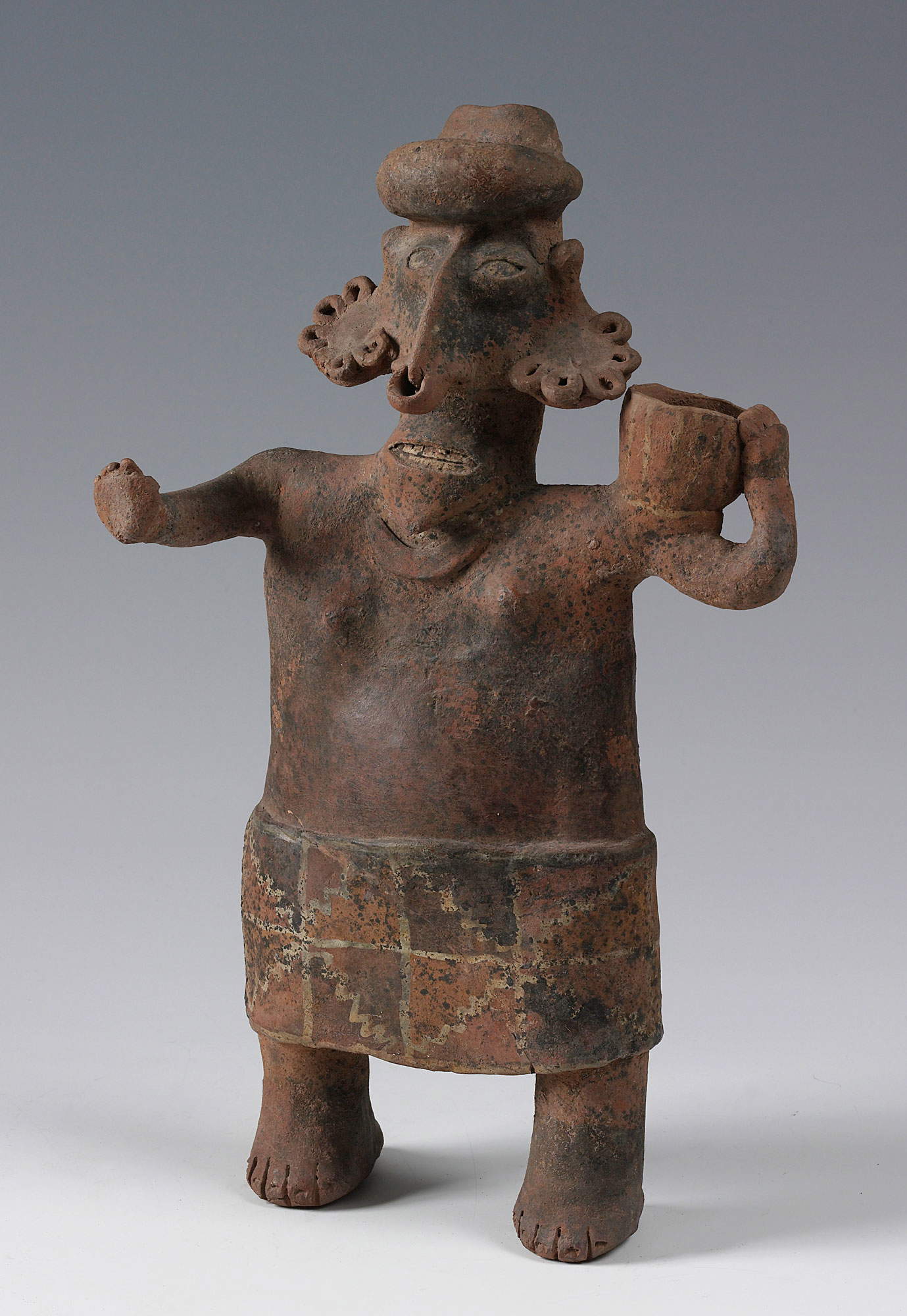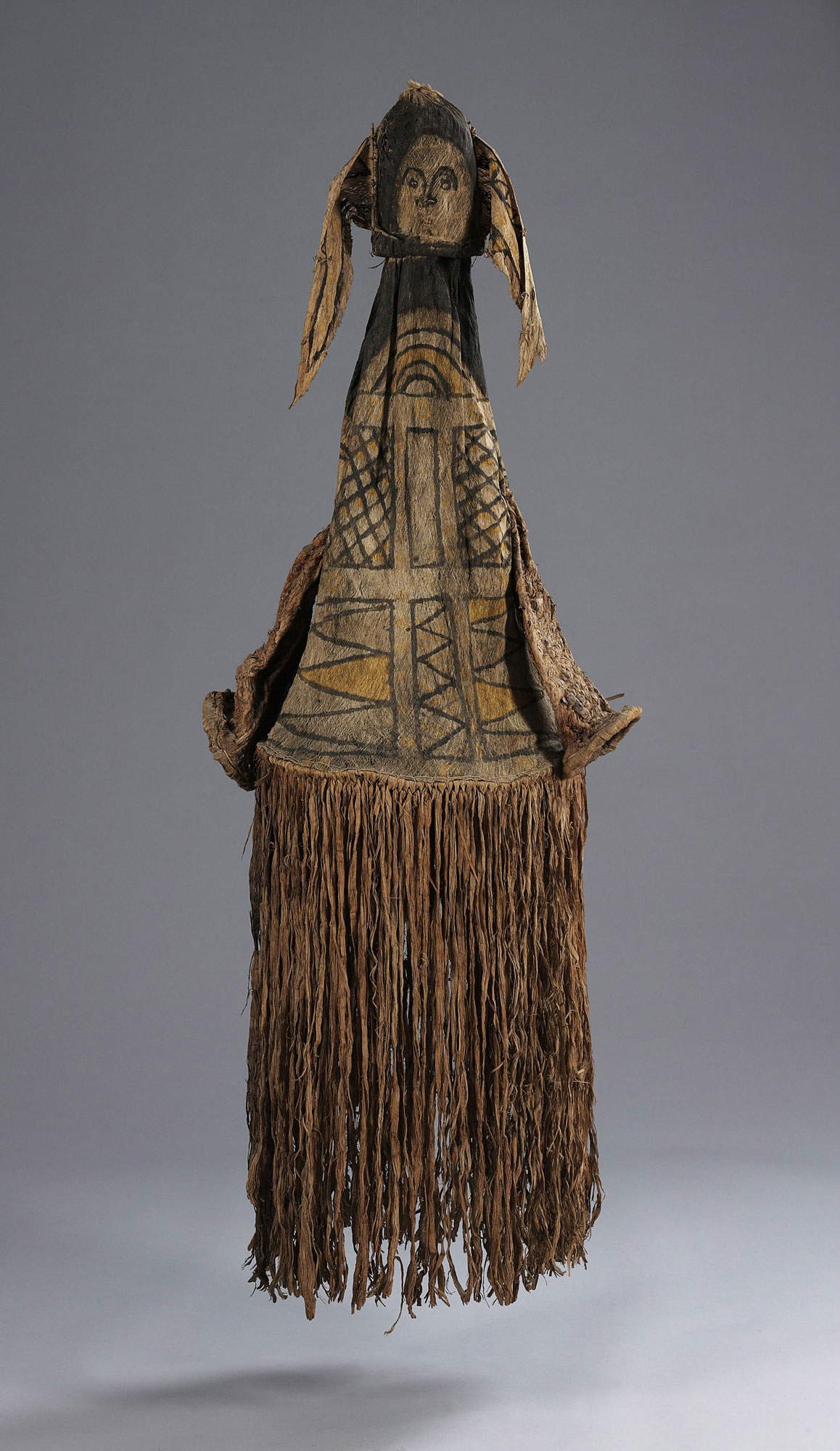by Ilaria Baratta , published on 21/02/2020
Categories: Works and artists
/ Disclaimer
The exhibition "Migrating Objects," on view at the Peggy Guggenheim Collection in Venice until June 14, 2020, revolves around non-Western and non-European objects in the institution's collection. An in-depth look at the theme.
The year was 1959 and ten years had already passed since the famous American collector Peggy Guggenheim (New York, 1898 - Camposampiero, 1979) had moved permanently to Venice, to the Palazzo Venier dei Leoni: starting that year, Peggy began to acquire objects for her collections that went beyond the borders of Europe and the United States to turn to the art ofAfrica,Oceania and the Americas. Indeed, during the 1950s and 1960s, she devoted herself to a still little-known aspect of her collecting history, around which revolves the current exhibition on view at the Peggy Guggenheim Collection ’s museum venue until June 14, 2020, entitled Migrating Objects. Art from Africa, Oceania and the Americas in the Peggy Guggenheim Collection, curated by Christa Clarke, R.Tripp Evans, Ellen McBreen, Fanny Wonu Veys with Vivien Greene.
The first objects to be acquired by Peggy herself were “twelve fantastic [artifacts]: masks and sculptures from New Guinea, Belgian Congo, French Sudan, Peru, Brazil, Mexico and New Ireland,” as she wrote in her memoirs. The impetus for this “non-Western” collecting was her second husband, the Surrealist artist Max Ernst (Brühl, 1891 - Paris, 1976), who was supplied with these treasures through New York art dealer Julius Carlebach. As early as the 1940s, Ernst owned the Kwakiutl mask of British Colombia and the Kachina doll army of the Southwestern United States. Of the period when the two separated, Peggy had clear in her mind the moment when “he was pulling his treasures off the walls, one after the other”; probably buying these kinds of objects represented for her a kind of redemption from the painful separation: “now [his treasures] were all coming back to me.” Regardless of the sentimental implications, the purchase of these artifacts would not have been possible without the imperialist aspect of colonial trade and ethnographic expeditions. And there were many artists of the early twentieth century, including Henri Matisse (Le Cateau-Cambrésis, 1869 - Nice, 1954) and Pablo Picasso (Malaga, 1881 - Mougins, 1973), who began to collect objects of African and oceanic culture in order to study them and to apply some of their principles to their art. In addition, art museums began to display objects that used to be seen only in ethnographic or natural history museums. The “non-Western” aspect of Peggy’s collecting therefore fell within the scope of an interest that had previously developed in the world of art and the marketplace. The collector was well aware of the writings of the English sculptor Henry Moore (Castleford, 1898 - Much Hadham, 1986), in which he stated, “Primitive art is a mine of information...but in order to understand and appreciate it fully, direct viewing of the works is of paramount importance, rather than the study of the history, religion, and social customs of primitive peoples.” However, the artists who introduced African, Oceanic and pre-Columbian art into their paintings and sculptures did so within a Eurocentric conception: it is therefore not strange for this reason to juxtapose Western works of art with non-Western works in order to compare them. In a 1966 photograph, for example, it is noted that at the Palazzo Venier dei Leoni Peggy had juxtaposed Picasso’s On the Beach (La Baignade) with a Dogon seated figure from the central region of Mali because of the relevant visual similarities. Indeed, in the Migrating Objects exhibition, the choice was made to place non-Western works in dialogue with some European avant-garde masterpieces, which also belong to the collection, by artists who supported the development of their modernist language by introducing this kind of artifacts from other cultures.
 |
| Unrecognized Dogon artist, Nduleri region, Mali, Seated Male Figure (probably first half of 20th century; Wood and natural pigments, 68 x 20 x 20 cm; Venice, Peggy Guggenheim Collection). Ph. Credit © manusardi.co.uk |
 |
| Unrecognized artist Bamana, Ségou region, Mali, Ci Wara male crest (Probably first half of 20th century; Wood, 106 x 38 x10 cm; Venice, Peggy Guggenheim Collection). Ph. Credit © manusardi.co.uk |
 |
| Unrecognized artist Senufo, Ivory Coast, Two-faced helmet mask (wanyugo) (Probably mid-20th century; Wood, 44 x 71 x 33 cm; Venice, Peggy Guggenheim Collection). Ph. Credit © manusardi.co.uk |
 |
| Unrecognized artist Baga, Guinea, Dmba shoulder mask (Probably first half of 20th century; Wood and brass bullets, 142 x 40 x 75 cm; Venice, Peggy Guggenheim Collection). Ph. Credit © manusardi.it |
 |
| Unrecognized artist Toma or Loma, Guinea, Mask (angbai or nyanbai) (Probably first half 20th century; Wood, iron nails, glass, metal, and resin, 88 x 39 x 15 cm; Venice, Peggy Guggenheim Collection). Ph. Credit © manusardi.co.uk |
 |
| Atelier of Oniyide Adugbologe, Abeokuta, Nigeria, Headdress (Ago Egungun) (Probably first half 20th century; Wood, pigments and natural dyes, 70 x 33 x 35 cm; Venice, Peggy Guggenheim Collection). Ph. Credit © manusardi.co.uk |
 |
| Unrecognized artist Kota, Gabon, Reliquary Figure (mbulu ngulu) (Probably late 19th century-early 20th century; Wood, copper, and iron, 61 x 35 x 11 cm; Venice, Peggy Guggenheim Collection). Ph. Credit © manusardi.co.uk |
 |
| Unrecognized artist Salampasu, Democratic Republic of Congo, Mask (mukinka) (Probably first half of 20th century; Wood, copper, plant fibers, kaolin and natural pigments, 62 x 26 x 28 cm; Venice, Peggy Guggenheim Collection). Ph. Credit © manusardi.co.uk |
If non-Western art was considered, in a certain sense, to inspire the avant-garde, in the years of the regime this was classified as degenerate art, so much so that in the famous exhibition, entitled Entartete Kunst, staged in 1937 in Munich, primitivist works were the object of precisely racist condemnations: a clear example of this is the very cover of the exhibition catalog, on which was depicted the sculpture of the Jewish artist Otto Freundlich(S?upsk, 1878 - Majdanek, 1943), entitled Great Head or The New Man: it was a large face typical of primitive art inspired by the huge statues on Easter Island.
The presence of African, Oceanic, and pre-Columbian objects in Peggy Guggenheim’s collection was considered in some cases as an anti-fascist statement, partly because the collector had Jewish origins, but also as an emblem of her cosmopolitan life or as a legacy of theepoch of colonialism. The aim of the exhibition is to expose the misinterpretations imposed by Western culture about these non-Western objects, partly by displaying them in groups privileging their original contexts and partly by comparing them with European avant-garde works. Choosing to employ these two different methods allows us to consider how works, whose original meanings and purposes are often misunderstood, are placed in studios, galleries, and museums with often contradictory purposes. Tracing the trajectories of these objects is an act that reveals the entanglements that have formed between colonization, annexation, migration, and reinterpretation.
The artifacts acquired in 1959 that began the collection of non-Western art, which was enriched in the 1960s, growing to own about fifty, came mainly from Africa: Peggy was probably influenced by her friendships and relationships with artists influenced by African culture: she was well acquainted,for example, with the collections of Walter and Louise Arensberg and Helena Rubinstein,which brought together much African art, and with James Johnson Sweeney, who in 1935 organized the African Negro Sculpture exhibition at the Museum of Modern Art in New York; it should also not be forgotten that Jackson Pollock (Cody, 1912 - Long Island, 1956),of whom Peggy was the first patron, was strongly passionate about the myth and ritual of African art. In addition, by 1957 the Museum of Primitive Art had been opened in New York. Early purchases for the Guggenheim collection probably included the D’mba mask of the Baga people of Guinea and the Kota reliquary from Gabon; objects were added, in particular by Senufo artists from the area intersecting Burkina Faso, Ivory Coast and Mali. These are works dating from the first half of the 20th century, thus roughly contemporary with the European modern artworks in the collection. The Guggenheim collection reflects the complex history of decolonization, the development of trade networks, and the spread of a taste for the primitive.
Among the most significant of the twenty on display are the seated male figure from the N’duleri region (Mali), the Ci Wara male crest from the Ségou region (Mali), the two-faced helmet mask from the Ivory Coast, the D’mba shoulder mask and the angbai or nyanbai mask, both from Guinea, the headdress from Nigeria, the reliquary figure from Gabon, and the mukinka mask from the Democratic Republic of Congo.
In contrast, there are nine objects in the collection from the Pacific: these were mostly favored by the Surrealists, and Peggy was in constant contact with them, namely Max Ernst and his friends. There is even a “Surrealist map of the world,” published in 1929 by the Belgian magazine Variétés, which represents the Surrealists’ interest in everything Pacific. Peggy acquired mainly malangan sculptures, a term for the carvings, ceremonies and dances of the people of northern New Ireland,Sepik art figures and a Chambri flute cap from the Sepik River region of New Guinea. The latter was made to close the end of a long bamboo flute at ritual village ceremonies: the flute emits a sound that is regarded as the voice of the ancestors and only men who have been initiated can play it.
 |
| Unrecognized artist Mandara (or Tabar), Tabar Island, Northern New Ireland, Papua New Guinea, Funeral sculpture (malangan maramarua) (Early 20th century; Wood, natural pigments, sea snail opercula, 170 x 22 x 22 cm; Venice, Peggy Guggenheim Collection). Ph. Credit © manusardi.co.uk |
 |
| Unrecognized artist Sawos, Yamok Village, East Sepik Province, Papua New Guinea, Figure of an ancestor (19001960; Wood and natural pigments, 140 x 30 x 17 cm; Venice, Peggy Guggenheim Collection). Ph. Credit © manusardi.co.uk |
 |
| Unrecognized artist Chambri, East Sepik Province, Papua New Guinea, Flute Figure (late 19th century-early 20th century; Wood, dog teeth, conus shells, plant fibers and natural pigments, 49 x 8 x 6 cm; Venice, Peggy Guggenheim Collection). Ph. Credit © manusardi.co.uk |
 |
| Unrecognized artist Wosera, South Abelam, Bobmagum (or Bogmuken) village, East Sepik Province, Papua New Guinea, Ancestral figure (miamba maira) (Mid-20th century; Wood and natural pigments, 168 x 31 x 14 cm; Venice, Peggy Guggenheim Collection). Ph. Credit © manusardi.co.uk |
 |
| Unrecognized artist Abelam o Boiken, Maprik, East Sepik Province, Papua New Guinea, Element of a ceremonial house (Mid-20th century; Wood and natural pigments, 142 x 112 x 37 cm; Venice, Peggy Guggenheim Collection). Ph. Credit © manusardi.co.uk |
 |
| Unrecognized artist Nayarit (Ixtlán del Río culture), Early Western Mexico, Female Figure (300 AEV400 EV; Earthenware with engobe, 42 x 24 x 13 cm; Venice, Peggy Guggenheim Collection). Ph. Credit © manusardi.it |
 |
| Unrecognized artist Cubeo, Rio Uaupés region, northern Amazonia, Bark Mask (First half of 20th century; Beaten bark, natural pigments and palm thread, 140 x 55 x 35 cm; Venice, Peggy Guggenheim Collection). Ph. Credit © manusardi.co.uk |
There are six pre-Columbian and Amazonian works in the non-Western collection and include three from ancient western Mexico, two from the Chimor in Peru, and one from the Cubeo people of the Rio Uaupés in the northern Amazon. They all share a connection with funerary rites. These include the terracotta figures originating from Nayarit in ancient western Mexico, namely two standing figures and a married couple with child, characterized by a hollow, small-scale type of sculpture. These are figures that, inside tombs, accompany the deceased and represent them at the most significant stages of their existence. The two Peruvian works from the Chimor kingdom, namely a three-paneled funerary mask and a feather-covered poncho, belong to high-ranking burials. Originally the funerary mask panels were hinged and rested on a fardo, that is, a bundle mummy that had the image of the deceased in the center; the poncho made of tropical feathers was a luxury item, and the scaled triangle motif and stylized camelid decorations hark back to the Nazca culture. The Amazonian beaten bark mask of the Cubeo people is a funerary robe: it represents the spirit of an animal and comes to cover the body of dancers taking part in the funeral ceremonies the Cubeo people perform for clan members.
Thirty-five works of non-Western art that reveal a core of the Guggenheim collection rarely seen by the public and remarkably significant for understanding the celebrated collector’s artistic interests that go beyond the usual boundaries of Europe and the United States.
Warning: the translation into English of the original Italian article was created using automatic tools.
We undertake to review all articles, but we do not guarantee the total absence of inaccuracies in the translation due to the program. You can
find the original by clicking on the ITA button. If you find any mistake,please contact us.

